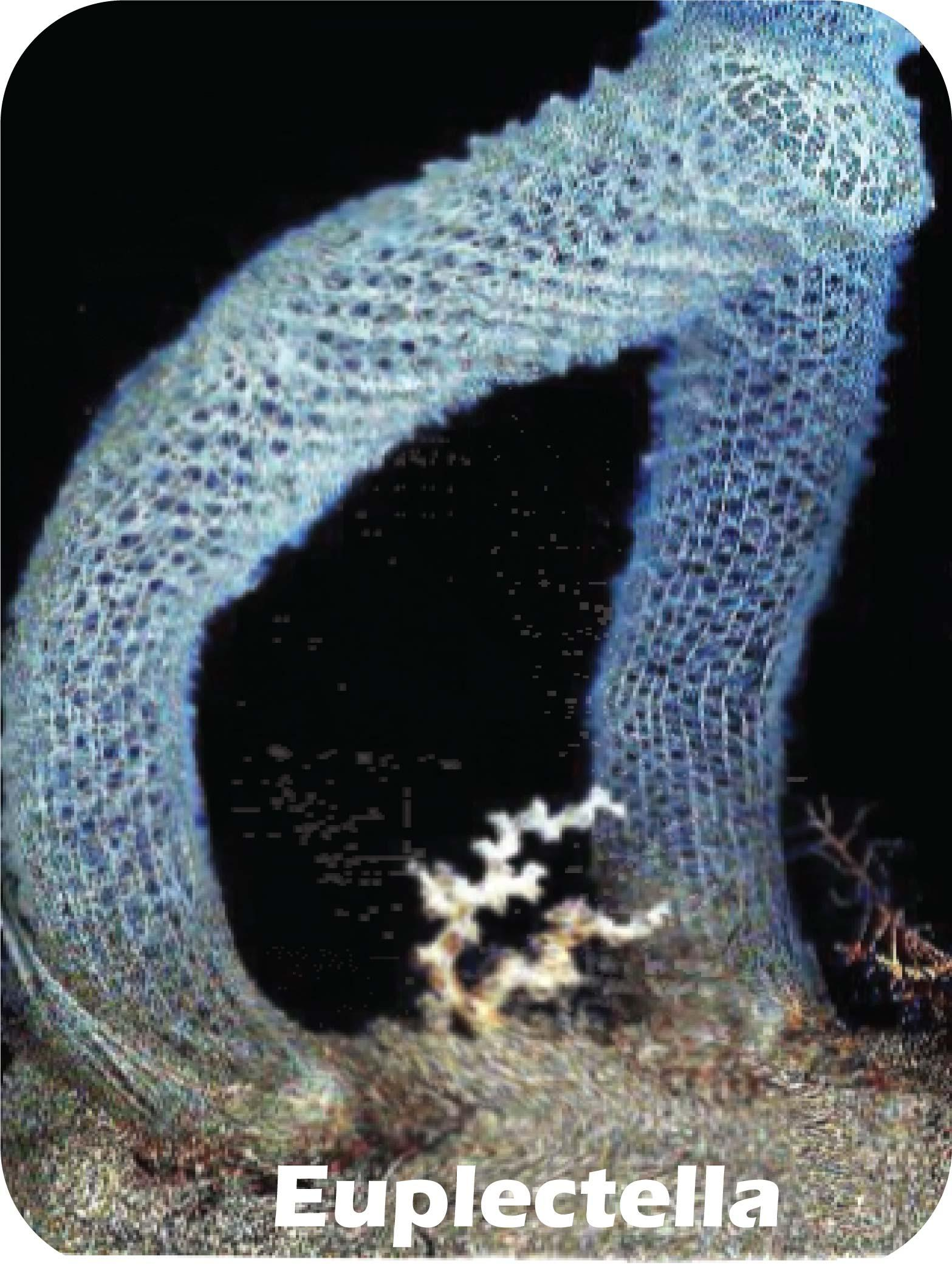
Euplectella becomes a precious ornamental gift if it contains
A) A pearl
B) A gem
C) Remains of shrimps pair
D) Coral
Answer
577.2k+ views
Hint: Synonymous to prawn with long narrow tail, long antennae with slender legs. It is an important food source for marine water animals as well as for human consumption.
Complete answer:
Euplectella belongs to Porifera phylum. Some abyssal pairs of shrimp are found within the cavity produced by the lattice structure of Euplectella’s skeleton. The young pair of shrimp enters and reproduces inside the cavity. The offspring escape and find a new sponge for them.Euplectella is also known as “venus’ flower” is a glass sponge whose skeleton is made up of silica found in the pacific ocean and Indian ocean.

Additional Information:
-Euplectella’s skeleton contains hexactine i.e six-rayed siliceous spicules.
-The skeleton of euplectella is made up of silica in which they do not require heat to form their glass lattices.
-The body of euplectella is tubular, curved, basket-like, and perforated by numerous apertures.
-The euplectella converts silicic acid from seawater into silica.
-The euplectella sponge is bioluminescence to attract plankton.
-During unfavorable conditions, they reproduce by asexually.
-The euplectella is hermaphroditic, and produces both female and male at different times.
-Eupectelle’s staple food is microscopic organisms and organic debris filters out from the water that flows through the sponge.
So, the correct answer is ‘Remains of shrimp pair’.
Note: -Euplectella is of great interest in science because of silica which can be used in the manufacturing of fiber optic.
-The pair of shrimps live in the sponge until they die.
-Euplectella is considered a symbol of love in japan as a nuptial gift.
Complete answer:
Euplectella belongs to Porifera phylum. Some abyssal pairs of shrimp are found within the cavity produced by the lattice structure of Euplectella’s skeleton. The young pair of shrimp enters and reproduces inside the cavity. The offspring escape and find a new sponge for them.Euplectella is also known as “venus’ flower” is a glass sponge whose skeleton is made up of silica found in the pacific ocean and Indian ocean.

Additional Information:
-Euplectella’s skeleton contains hexactine i.e six-rayed siliceous spicules.
-The skeleton of euplectella is made up of silica in which they do not require heat to form their glass lattices.
-The body of euplectella is tubular, curved, basket-like, and perforated by numerous apertures.
-The euplectella converts silicic acid from seawater into silica.
-The euplectella sponge is bioluminescence to attract plankton.
-During unfavorable conditions, they reproduce by asexually.
-The euplectella is hermaphroditic, and produces both female and male at different times.
-Eupectelle’s staple food is microscopic organisms and organic debris filters out from the water that flows through the sponge.
So, the correct answer is ‘Remains of shrimp pair’.
Note: -Euplectella is of great interest in science because of silica which can be used in the manufacturing of fiber optic.
-The pair of shrimps live in the sponge until they die.
-Euplectella is considered a symbol of love in japan as a nuptial gift.
Recently Updated Pages
Master Class 11 Social Science: Engaging Questions & Answers for Success

Master Class 11 Physics: Engaging Questions & Answers for Success

Master Class 11 Maths: Engaging Questions & Answers for Success

Master Class 11 Economics: Engaging Questions & Answers for Success

Master Class 11 Computer Science: Engaging Questions & Answers for Success

Master Class 11 Chemistry: Engaging Questions & Answers for Success

Trending doubts
What is meant by exothermic and endothermic reactions class 11 chemistry CBSE

10 examples of friction in our daily life

One Metric ton is equal to kg A 10000 B 1000 C 100 class 11 physics CBSE

1 Quintal is equal to a 110 kg b 10 kg c 100kg d 1000 class 11 physics CBSE

Difference Between Prokaryotic Cells and Eukaryotic Cells

The camels hump is made of which tissues a Skeletal class 11 biology CBSE




